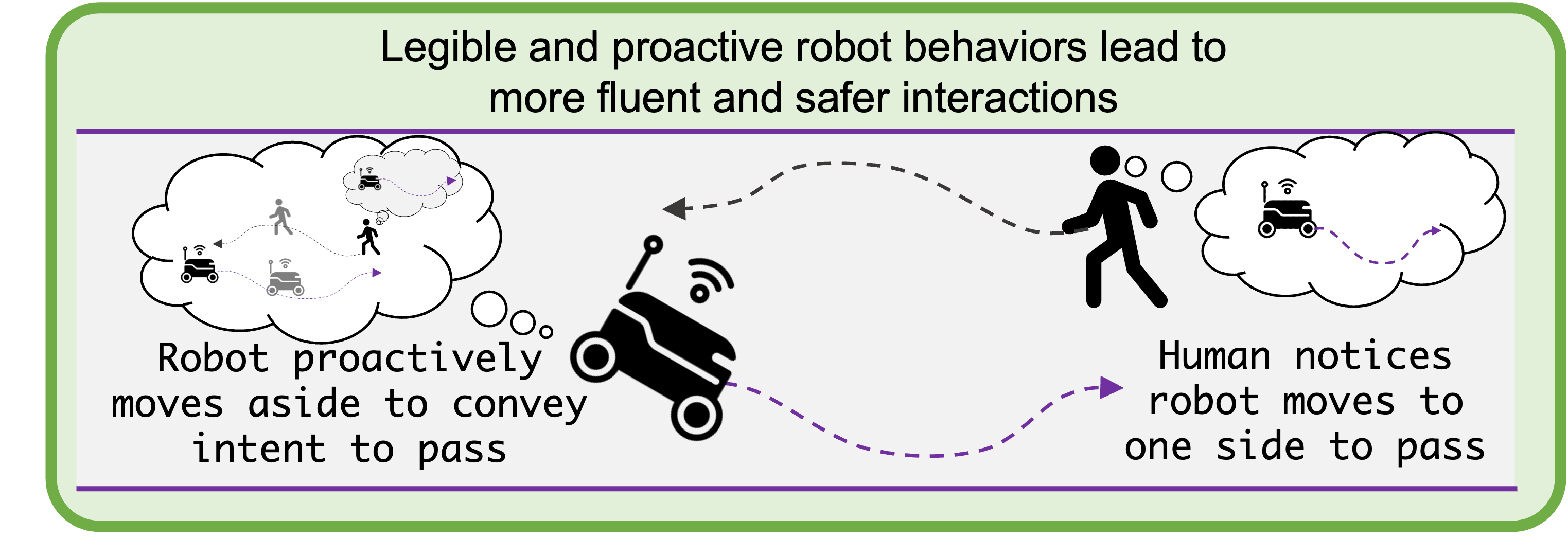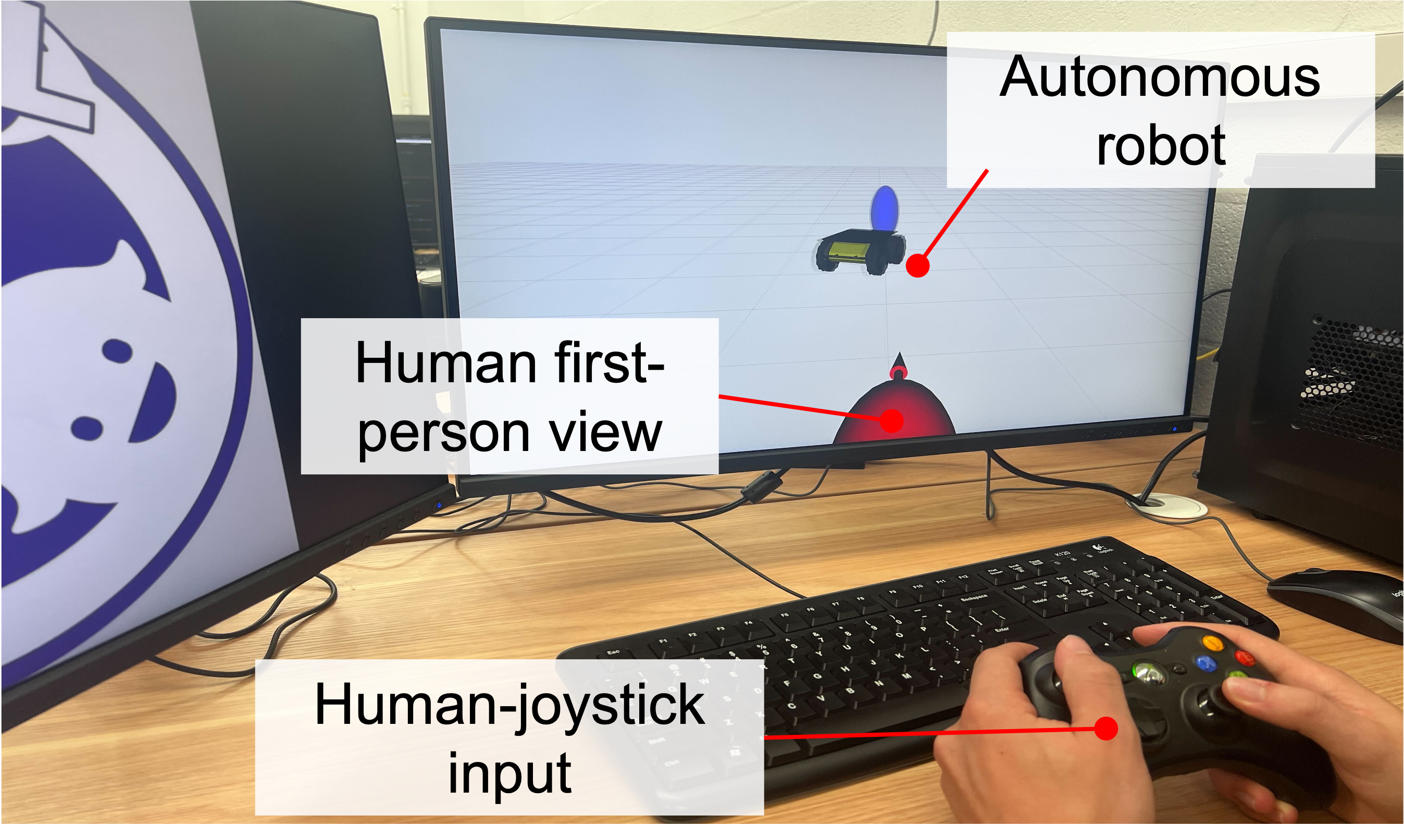
Legible and proactive behaviors lead to safer, more fluent human-robot interactions

Setup used for human-in-the-loop (HITL) simulation testing.
.png)
Joint path planning compared between our method (PHRI) and other baseline methods.

Humans have a remarkable ability to fluently engage in joint collision avoidance in crowded navigation tasks despite the complexities and uncertainties inherent in human behavior. Underlying these interactions is a mutual understanding that (i) individuals are prosocial, that is, there is equitable responsibility in avoiding collisions, and (ii) individuals should behave legibly, that is, move in a way that clearly conveys their intent to reduce ambiguity in how they intend to avoid others. Toward building robots that can safely and seamlessly interact with humans, we propose a general robot trajectory planning framework for synthesizing legible and proactive behaviors and demonstrate that our robot planner naturally leads to prosocial interactions. Specifically, we introduce the notion of a markup factor to incentivize legible and proactive behaviors and an inconvenience budget constraint to ensure equitable collision avoidance responsibility. We evaluate our approach against well-established multi-agent planning algorithms and show that using our approach produces safe, fluent, and prosocial interactions. We demonstrate the real-time feasibility of our approach with human-in-the-loop simulations.


.png)

@inproceedings{GeldenbottLeung2024,
author = {Geldenbott, J. and Leung, K.},
booktitle = {{Proc.\ IEEE Conf.\ on Robotics and Automation}},
title = {Legible and Proactive Robot Planning for Prosocial Human-Robot Interactions},
year = {2024}
}